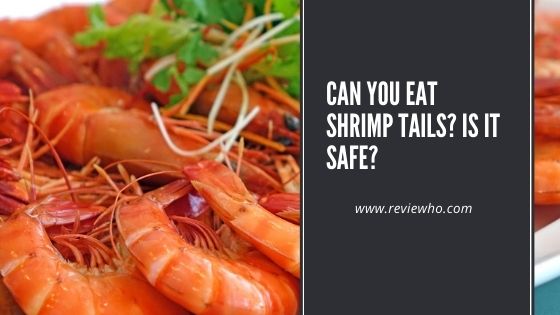Not everyone loves or appreciates seafood. However, if you do, it is possible that you have a range of shrimp over the years. You might have noticed that shrimp almost have tails on. At the same time, you have seen almost everyone removing these tails before enjoying the shrimp. The problem is, most of the restaurants we have visited do not remove the tails before serving.
Why is that? Can you eat shrimp tails? Are shrimp tails edible? Is it possible that by removing the tails we are actually missing out on a part that is a delicious part of the meal?
We have done extensive research and have compiled this article to help address this issue. So, is it safe to eat shrimp tails? Let’s find out.
Are Shrimp Tails Edible?
Is it safe to eat shrimp tails? We have figured out that eating shrimp tails is possible. However, these tails should not be eaten. In most cases, these tails are kept on the shrimp to improve the flavor and often for presentation, not to eat. It is quite similar to chicken bones cartilage. There are those who love it and others prefer to steer away from it.
The shrimp tails are hard and chewy and it is even easier to chew them when the shrimp you are served is smaller. You will have a lot more flavor from the tail but removing them is up to you and your preference.
Some of the large shrimp, for instance, colossal and jumbo, tend to have harder, larger tails. It is not advisable to have that shrimp because they are an actual choking hazard.
The smaller shrimp tails can be chewed with ease. However, it is all dependent on you. The shrimp shells and tails are made of chitin. It is a brittle and hard material that is found in all insects and shellfish. It is supposed to be a tough shield to protect these animals.
Therefore, as you would expect, eating these parts can be quite challenging.
Their Purpose
We have figured out that you can actually eat the tails and they are edible. So why do chefs leave tails on shrimp? It is quite simple. Shrimp tails look nice. Not every meal prepared in the world will have a tail of the animal you are eating. However, a seafood platter, fried shrimp, and shrimp cocktail will have the tails on.
When it is not easy to remove these tails in a certain meal, they will be removed before being cooked. Some of the dishes such as paella, salads, pasta, stir-fries, and more are good examples. Nevertheless, it all depends on the chef to keep the tails on or to remove them.
To be honest, we are not always on the same page with the chef. You might feel that you do not want the tail on a certain meal but the chef might have his or her own ideas, which is why it is better to ask for the tails to be removed if you need that.
In certain situations, the tails are usually useful. It is true. It might depend on what you are enjoying and how it is prepared but the tail might be a very convenient and easy way of holding the shrimp when preparing it. Think about it this way. You want fried, breaded shrimp. The meat is the only breaded part of the shrimp. It would make sense to hold the shrimp’s tail and enjoy the rest of the meat.
When cooking the shrimp, you can take them out of the oil easier with the tail. You will work easier with tongs and will not affect the breading while cooking.
That is all there is in regards to the use of tails. It is preferred that we do not have the tails on the shrimp, but you can understand why you will find a tail on your shrimp when it is served.
Leave The Tails on for Boosted Flavor
Assuming that you are cooking your shrimp at home, you would need to have an amazing flavor. Leaving the tails on will help you achieve the level of flavor you want. Ironic, huh? Now you will have to leave them on just like the chef in that restaurant. You should leave them on for their flavor while they cook. However, after they are done, you should take them off.
The chitin, coupled with the shrimp-ness of the tails, will help to improve greatly on the flavor. When you are making stock and intend to have the best flavor, you should consider leaving these tails on.
What about the Heads?
You should leave the heads on too. But this also applies only when you are making. We have been wondering are shrimp tails digestible? But did you know that there are people who also enjoy the heads? However, eating a shrimp’s head is a bit more difficult. That is mainly because you have to suck the brains off the head. Those who do it say that the flavor is hidden in the head while others just think it is a weird thing to do.
But it does not matter what you think about eating the heads. When you are cooking, simmering the heads and the tails will make some good stock. Just like in other stocks, the bones, cartilage, skin, and other connective tissue have the most flavors.
You can choose to remove that head after you are done cooking. If you do not want to eat it, you have no reason to leave it on there. If you are serving a picky eater, simply remove the tails and the heads.
Conclusion
In regards to eating shrimp tails, that is all there is to know. But you cannot know if you love it if you do not try it out, right? You might be curious, which is why we suggest that you try it out. However, you need to make sure that you are working with a smaller shrimp with a smaller tail. Find out what you actually think about them.
But it all comes down to this. If you do not want it, remove it. Enjoy!
Also, read:
Feel free to share your observations with me in the comments section!
Also, if you find the information in this post to be useful, be sure to share this post with your friends on Facebook, Twitter, and Pinterest!




